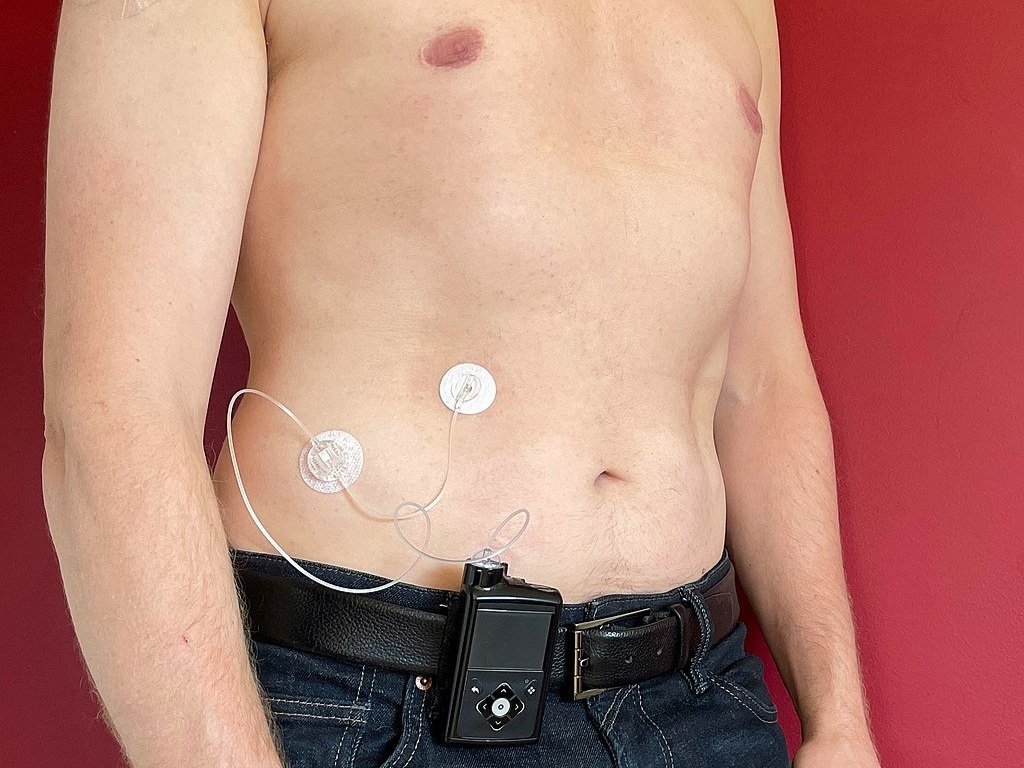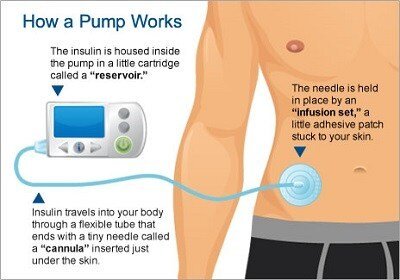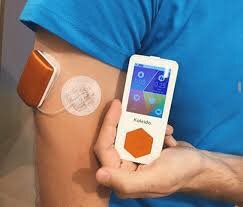Insulin Pumps have evolved a lot in the last 10 years and have transformed from being insulin delivery only to Advanced Hybrid Closed Loop Systems.
An insulin pump is a small device that delivers insulin through a tiny flexible cannula/plastic needle under your skin. It’s programmed to deliver insulin at different rates during the day (almost like a portable mini IV drip that they have in hospitals), with larger doses given by the wearer for meals.
The pump is worn all the time but can be disconnected easily for showers.
Each device comes with different features and different software packages that you will have to upload your information to before you attend your clinic, and it is important to find one that works for you.
It is also worth remembering that an insulin pump does not work for everyone!
All of the insulin pumps available in Ireland have the capacity to integrate a continuous glucose monitor CGM but they can be used without this feature.
It's worth remembering that an insulin pump is not for everyone. It has to be the right device for the right person at the right time. Always remember that everybody's diabetes is different, and what works for you may not work for someone else!
Source: www libertymedical com diabetesarticle what is pump Jun 24 2014 Filename how pump works
Insulin pumps contain three main parts:
The pump part is where you tell the insulin pump what insulin to deliver. This is also the part that contains the insulin.
The Needle or infusion set is where the insulin enters your body. The infusion set is a short, thin tube (cannula) inserted into your skin with a small needle housed within the cannula to deliver insulin into a layer of fatty tissue. The needle is necessary to puncture the skin and insert the set. After insertion, the needle is removed, and the thin cannula stays under the skin. An infusion set is changed every three days.
Optional. The third main part of an insulin pump, if you are using an Advanced Hybrid Closed Loop System, is a glucose sensor which is explained in more detail here.
Tubed or Tubeless Patch Pumps
There are two types of insulin pumps: tubeless or patch pumps and traditional tubed pumps.
In the traditional tubed pumps, the infusion set is connected to the pump by a tube. In patch pumps, there is no tube, and the insulin reservoir is usually worn directly on the body with the infusion set. Examples of patch pumps are the Omnipod or the Kaleido pump.
Most patch pumps are controlled wirelessly through a separate handheld device that allows the programming of insulin delivery for meals from the patch. Patch pumps are also usually replaced every three days.
Diabetes UK has a very useful section on their website which will give you more detail about how insulin pumps work.
Advantages and Disadvantages of Insulin Pumps
If you are wondering if an insulin pump is the right choice for you or about the advantages and disadvantages of using one, the Cleveland Clinic Diabetes Centre has this great webpage that explains how the pump works in more detail. It is also really good to talk to people who are using them for more information - reach out to a support group near you.
It's worth remembering that an insulin pump is not for everyone. It has to be the right device for the right person at the right time. Always remember that everybody's diabetes is different, and what works for you may not work for someone else!
Insulin Pumps Available in Ireland
The Irish health service: the HSE invites insulin pump manufacturers to submit tender applications with a view to offering selected companies a contract to supply insulin pumps to the patients, but this is not on a regular basis at the moment. There are three insulin pumps available in Ireland at the moment through the HSE if you meet the qualifying criteria. See more about the qualifying criteria in Getting an Insulin Pump in Ireland.




